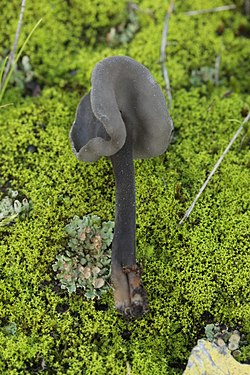| Helvella atra | |
|---|---|
 | |
| Scientific classification | |
| Kingdom: | Fungi |
| Division: | Ascomycota |
| Class: | Pezizomycetes |
| Order: | Pezizales |
| Family: | Helvellaceae |
| Genus: | Helvella |
| Species: | H. atra |
| Binomial name | |
| Helvella atra J. König | |
| Synonyms | |
Leptopodia atra(J. König) Boud | |
Helvella atra, commonly known as the dark elfin saddle, [1] is a species of fungus in the family Helvellaceae of the order Pezizales.